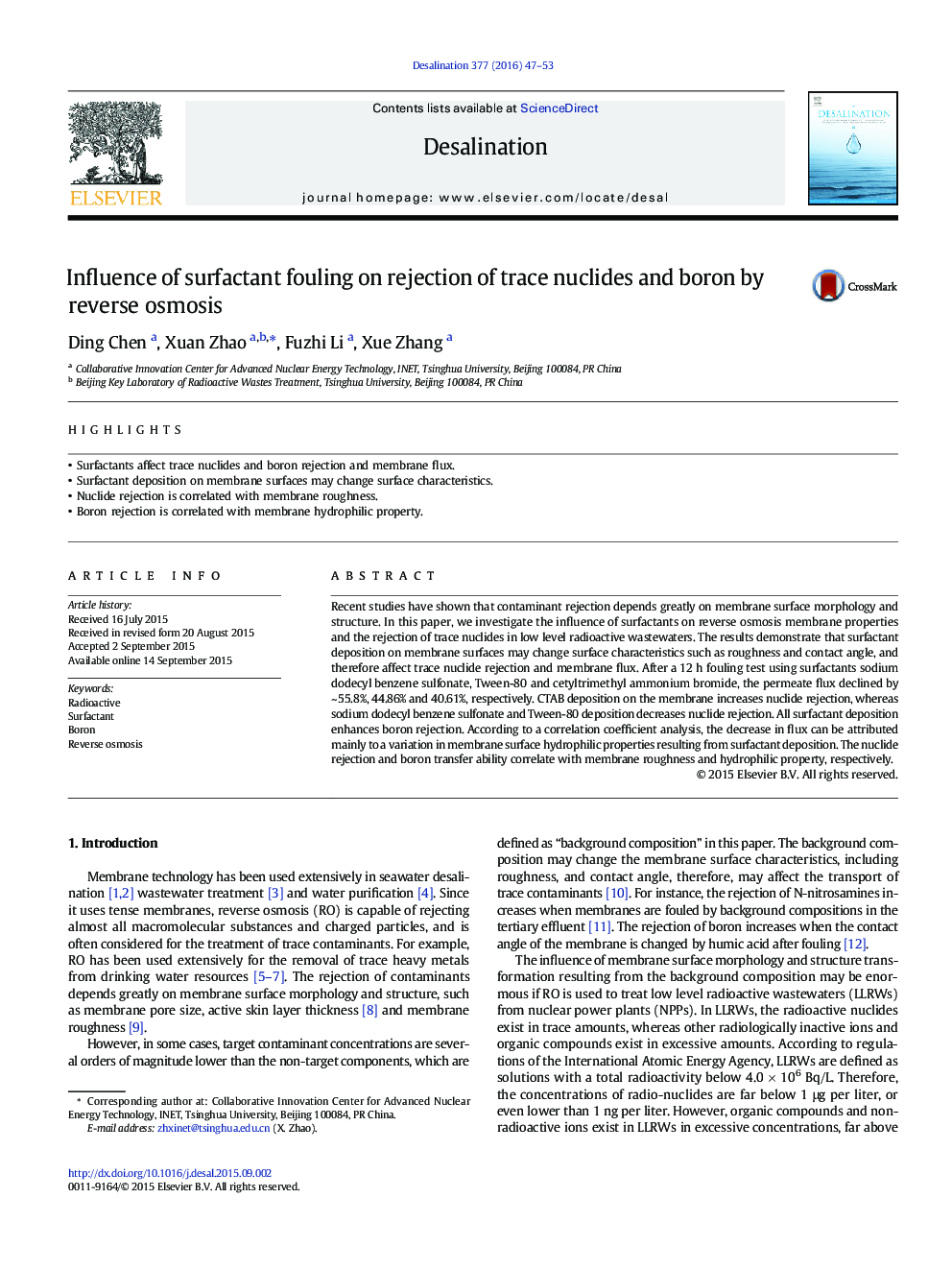| کد مقاله | کد نشریه | سال انتشار | مقاله انگلیسی | نسخه تمام متن |
|---|---|---|---|---|
| 622999 | 1455318 | 2016 | 7 صفحه PDF | دانلود رایگان |
• Surfactants affect trace nuclides and boron rejection and membrane flux.
• Surfactant deposition on membrane surfaces may change surface characteristics.
• Nuclide rejection is correlated with membrane roughness.
• Boron rejection is correlated with membrane hydrophilic property.
Recent studies have shown that contaminant rejection depends greatly on membrane surface morphology and structure. In this paper, we investigate the influence of surfactants on reverse osmosis membrane properties and the rejection of trace nuclides in low level radioactive wastewaters. The results demonstrate that surfactant deposition on membrane surfaces may change surface characteristics such as roughness and contact angle, and therefore affect trace nuclide rejection and membrane flux. After a 12 h fouling test using surfactants sodium dodecyl benzene sulfonate, Tween-80 and cetyltrimethyl ammonium bromide, the permeate flux declined by ~ 55.8%, 44.86% and 40.61%, respectively. CTAB deposition on the membrane increases nuclide rejection, whereas sodium dodecyl benzene sulfonate and Tween-80 deposition decreases nuclide rejection. All surfactant deposition enhances boron rejection. According to a correlation coefficient analysis, the decrease in flux can be attributed mainly to a variation in membrane surface hydrophilic properties resulting from surfactant deposition. The nuclide rejection and boron transfer ability correlate with membrane roughness and hydrophilic property, respectively.
Journal: Desalination - Volume 377, 1 January 2016, Pages 47–53
